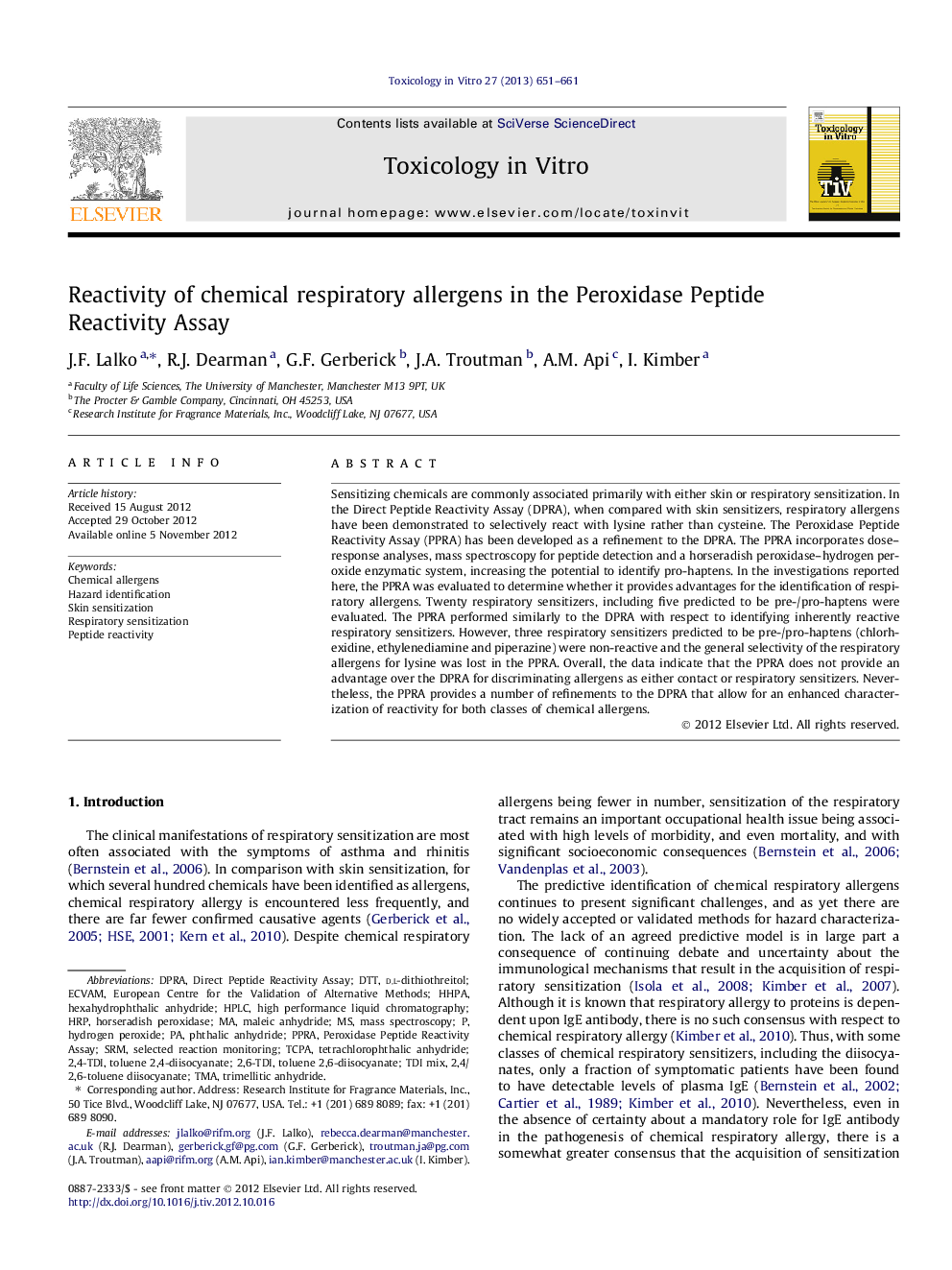| Article ID | Journal | Published Year | Pages | File Type |
|---|---|---|---|---|
| 5862513 | Toxicology in Vitro | 2013 | 11 Pages |
Sensitizing chemicals are commonly associated primarily with either skin or respiratory sensitization. In the Direct Peptide Reactivity Assay (DPRA), when compared with skin sensitizers, respiratory allergens have been demonstrated to selectively react with lysine rather than cysteine. The Peroxidase Peptide Reactivity Assay (PPRA) has been developed as a refinement to the DPRA. The PPRA incorporates dose-response analyses, mass spectroscopy for peptide detection and a horseradish peroxidase-hydrogen peroxide enzymatic system, increasing the potential to identify pro-haptens. In the investigations reported here, the PPRA was evaluated to determine whether it provides advantages for the identification of respiratory allergens. Twenty respiratory sensitizers, including five predicted to be pre-/pro-haptens were evaluated. The PPRA performed similarly to the DPRA with respect to identifying inherently reactive respiratory sensitizers. However, three respiratory sensitizers predicted to be pre-/pro-haptens (chlorhexidine, ethylenediamine and piperazine) were non-reactive and the general selectivity of the respiratory allergens for lysine was lost in the PPRA. Overall, the data indicate that the PPRA does not provide an advantage over the DPRA for discriminating allergens as either contact or respiratory sensitizers. Nevertheless, the PPRA provides a number of refinements to the DPRA that allow for an enhanced characterization of reactivity for both classes of chemical allergens.
⺠The PPRA was evaluated for its ability to identify chemical respiratory allergens. ⺠Reactive respiratory allergens were correctly identified by the PPRA. ⺠Selective binding to lysine/cysteine was allergen dependent with no clear pattern. ⺠Respiratory/skin allergens are not distinguished in the PPRA conditions utilized here.
